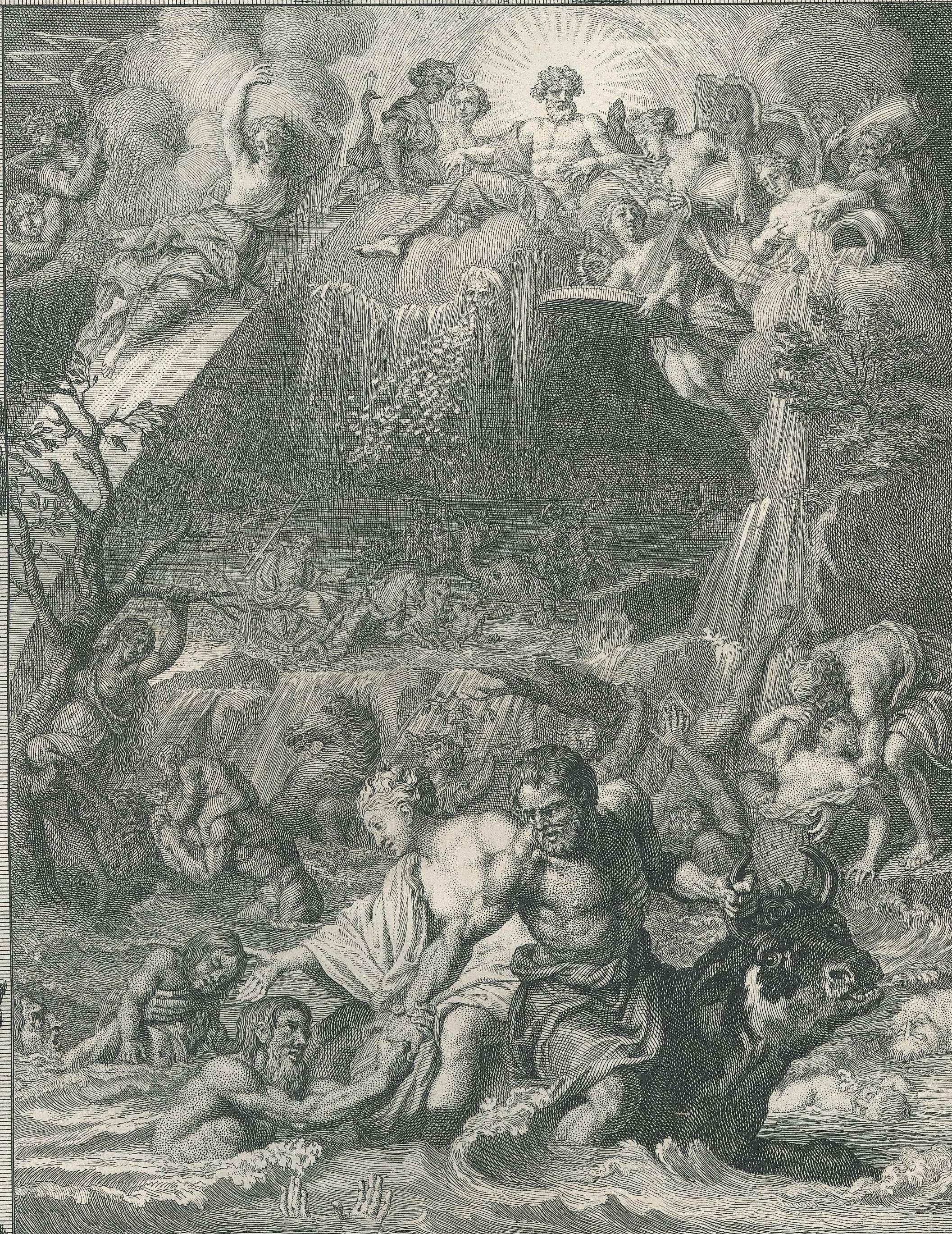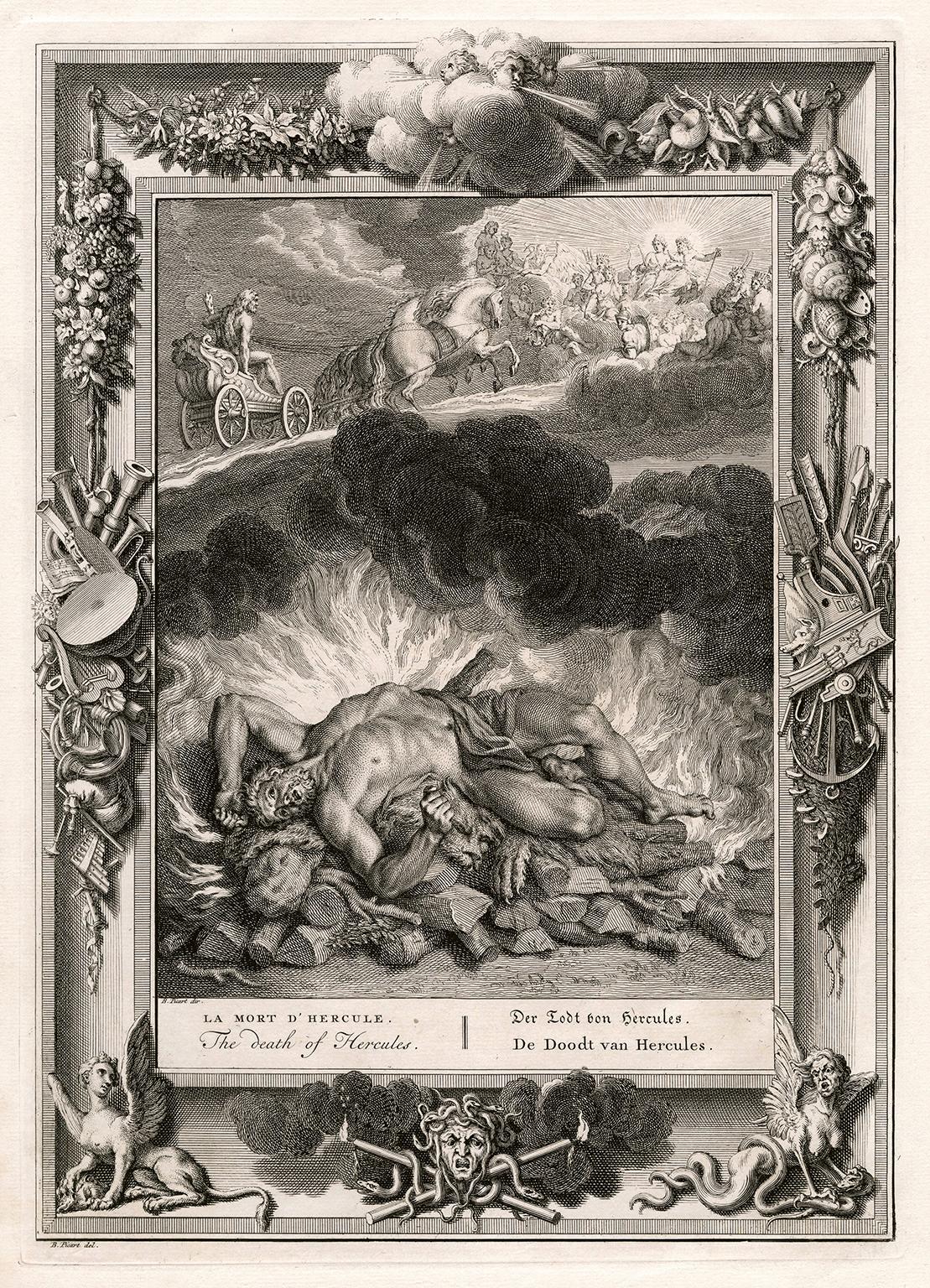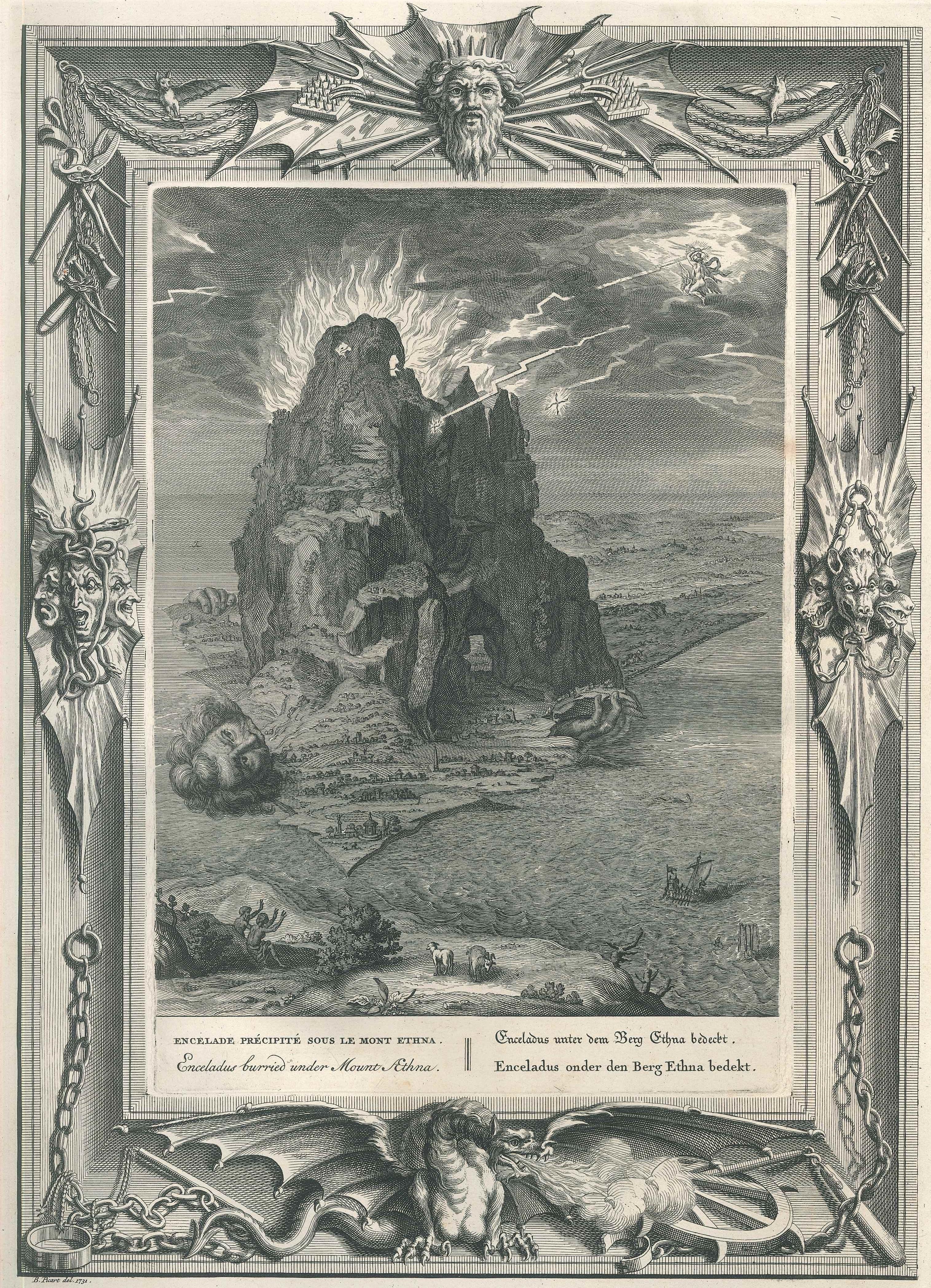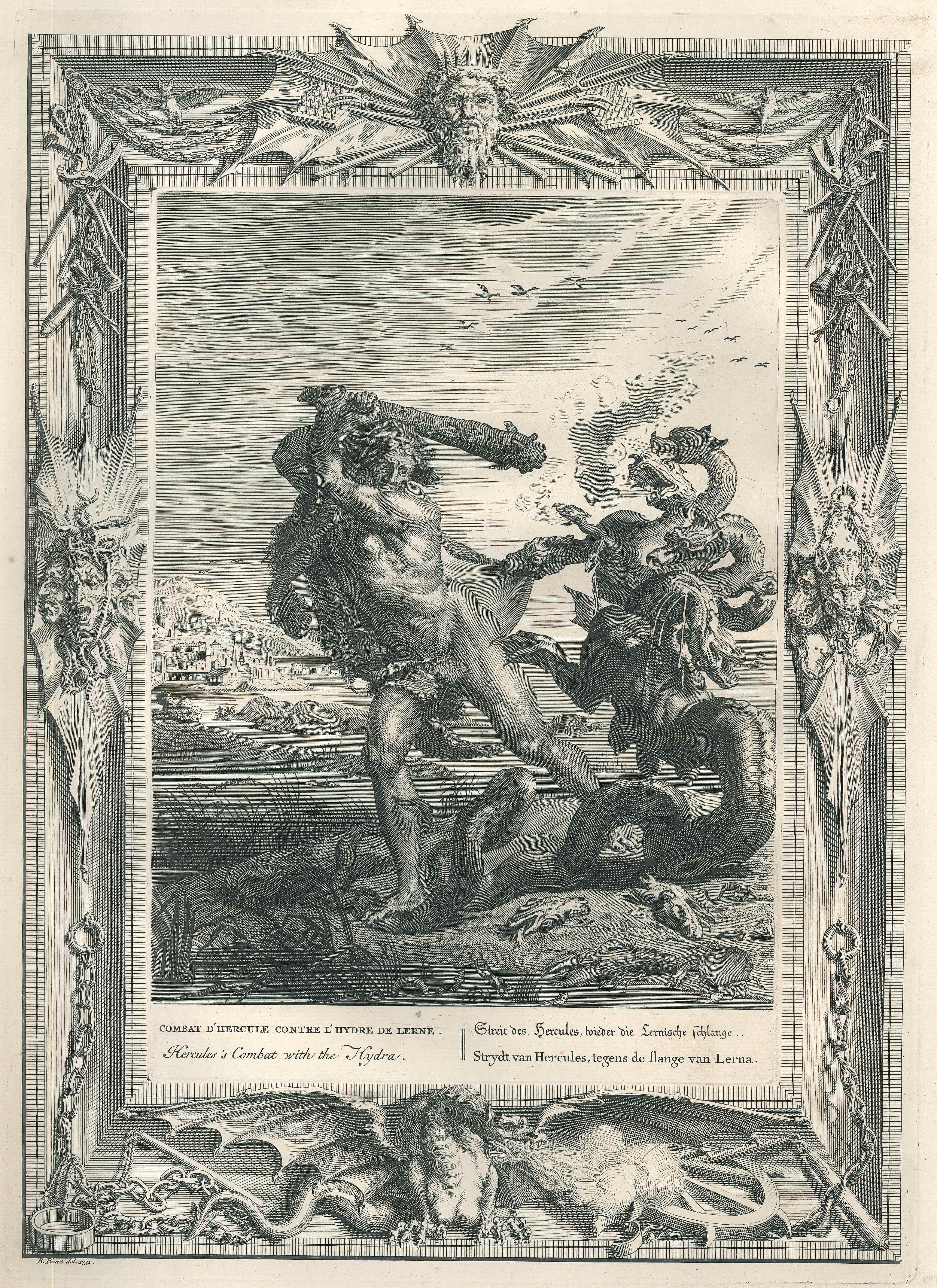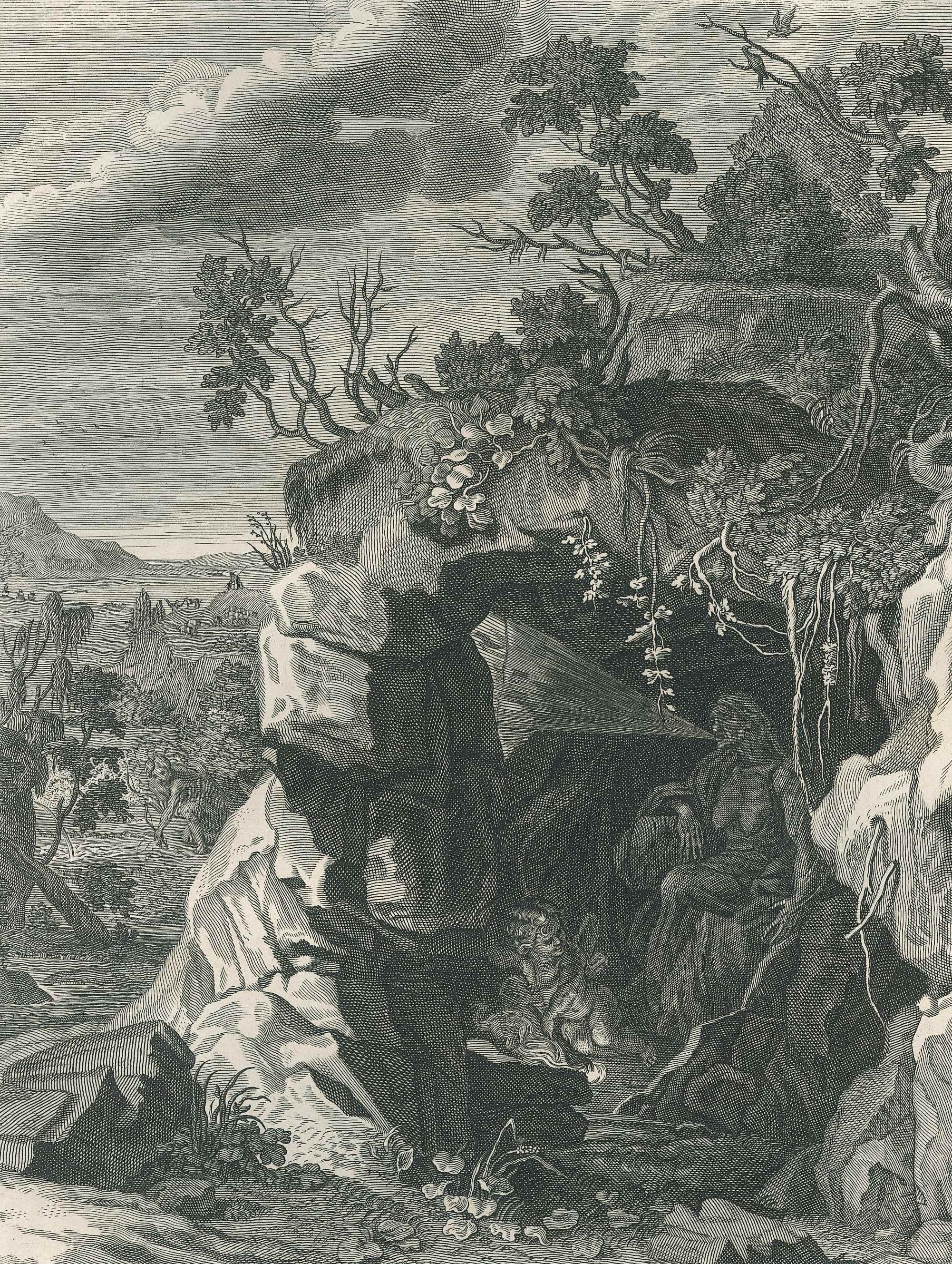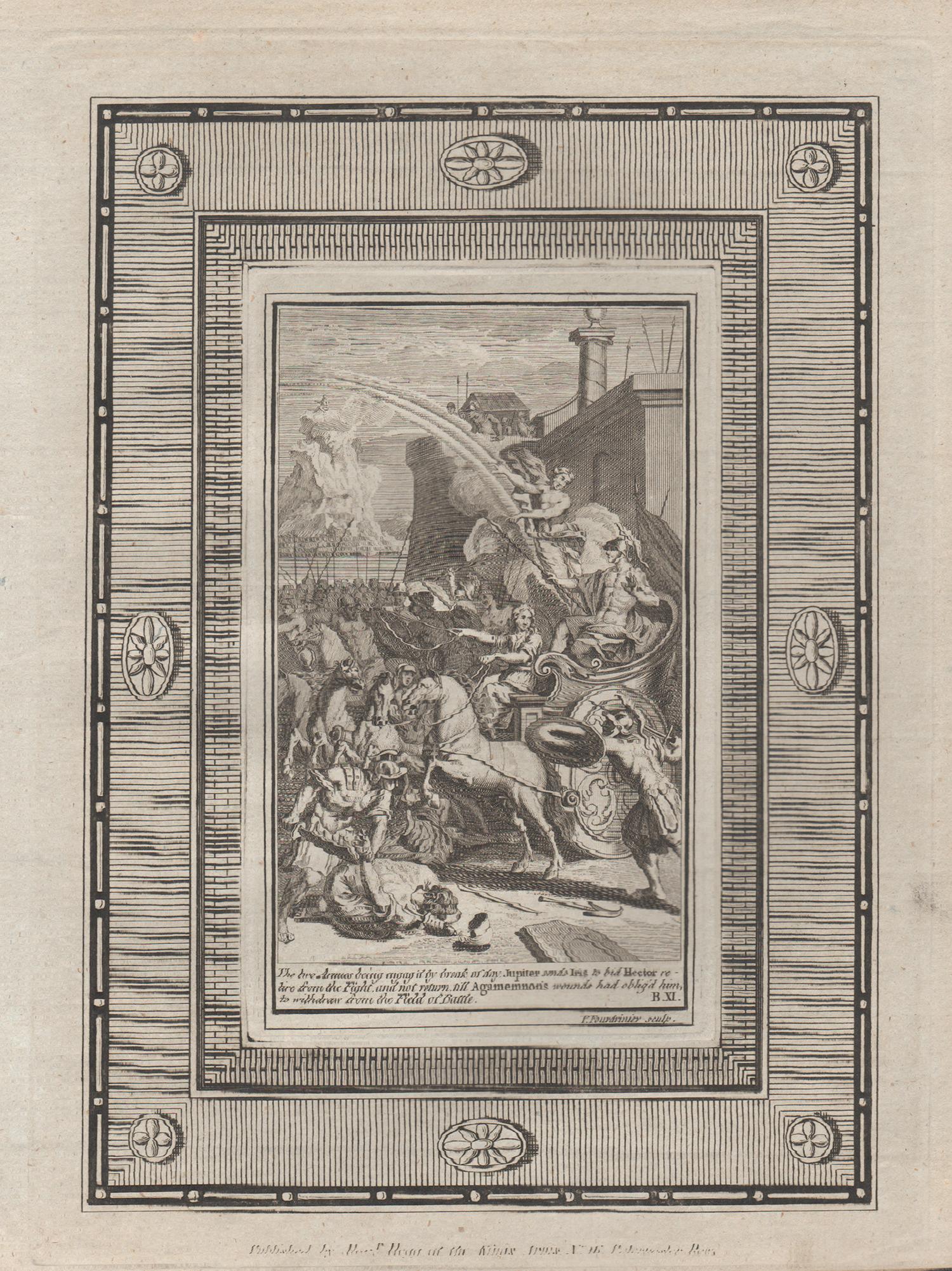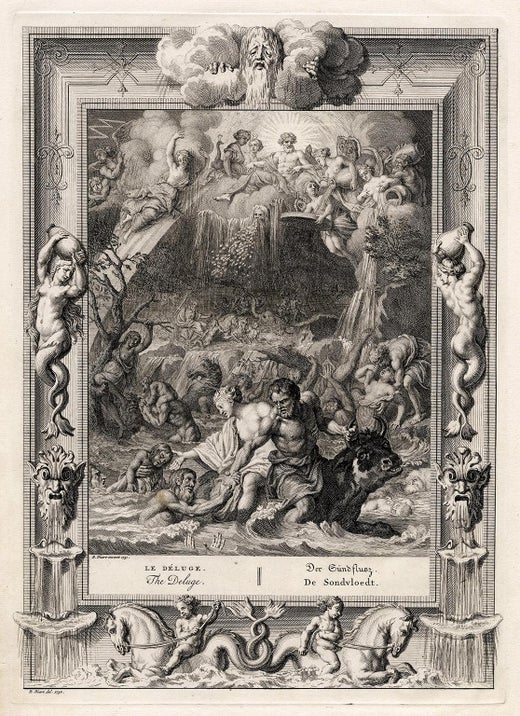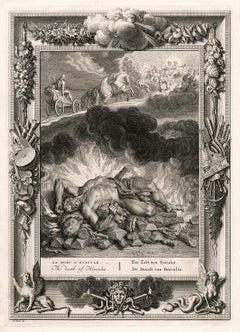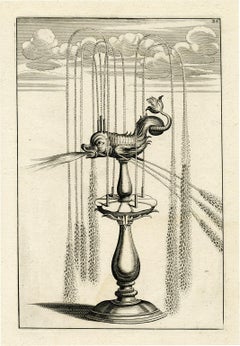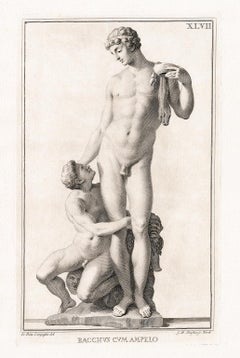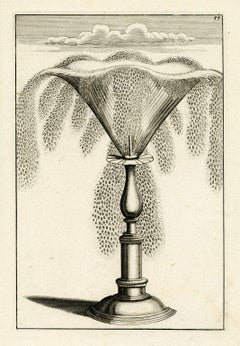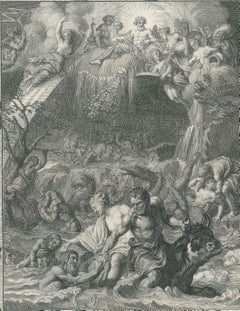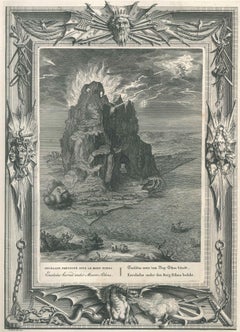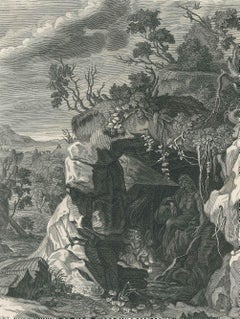Items Similar to 'The Deluge' from 'The Temple of the Muses' — 18th Century Engraving
Want more images or videos?
Request additional images or videos from the seller
1 of 6
Bernard Picart'The Deluge' from 'The Temple of the Muses' — 18th Century Engraving1730
1730
$375
£292.90
€332.04
CA$537.60
A$589.72
CHF 308.55
MX$7,018.88
NOK 3,897.20
SEK 3,655.64
DKK 2,479.88
About the Item
Bernard Picart, 'The Deluge' from 'The Temple of the Muses', engraving, 1730. Signed in the plate and dated
'1730' lower left. Titled in French, English, German, and Dutch. A superb, richly-inked impression on antique, cream, laid, handmade paper, with margins (1/2 to 1 7/8 inches); toning at the top sheet edge and minor, unobtrusive foxing in the margins, not affecting the image, otherwise in good condition. Image size 14 1/4 x 10 1/4 inches; sheet size 17 3/4 x 11 3/8 inches. Matted to museum standards, unframed.
Designed and engraved by the renowned french book engraver Bernard Picart (1673-1733). From the book 'The Temple of the Muses; or, the Principal Histories of Fabulous Antiquity, Represented in Sixty Sculptures', Amsterdam: Zachariah Chatelain, 1733. Each magnificent engraving depicts a fable of the ancient world, many from Ovid. The text is by Antoine de La Barre de Beaumarchais, Cohen de-Ricci 531.
- Creator:Bernard Picart (1673 - 1733, French)
- Creation Year:1730
- Dimensions:Height: 14.5 in (36.83 cm)Width: 10.07 in (25.58 cm)
- Medium:
- Movement & Style:
- Period:1730-1739
- Condition:
- Gallery Location:Myrtle Beach, SC
- Reference Number:Seller: 1038751stDibs: LU53238071152
Bernard Picart
Bernard Picart was a French engraver who is well-known for his illustrated books, including the Bible and Ovid. His most famous work is Cérémonies Et Coutumes Religieuses de Tous Les Peuples Du Monde, published from 1723–43 and defined as "an immense effort to record the religious rituals and beliefs of the world in all their diversity as objectively and authentically as possible" by Jonathan I. Israel.
About the Seller
5.0
Recognized Seller
These prestigious sellers are industry leaders and represent the highest echelon for item quality and design.
Platinum Seller
Premium sellers with a 4.7+ rating and 24-hour response times
Established in 1995
1stDibs seller since 2016
330 sales on 1stDibs
Typical response time: 1 hour
Associations
International Fine Print Dealers Association
- ShippingRetrieving quote...Shipping from: Myrtle Beach, SC
- Return Policy
More From This Seller
View All'The Death of Hercules' from 'The Temple of the Muses' — 18th Century Engraving
By Bernard Picart
Located in Myrtle Beach, SC
Bernard Picart, 'The Death of Hercules' from 'The Temple of the Muses', engraving, 1730. Signed in the plate, lower left. Titled in French, English, German, and Dutch. A superb, rich...
Category
1730s Baroque Figurative Prints
Materials
Engraving
Architectura Curiosa Nova, Dragon Fish Garden Fountain
By Georg Andreas Böckler
Located in Myrtle Beach, SC
George Andreas Böckler, 'Dragon Fish Garden Fountain', antique copperplate engraving, 1664, from the book 'Architectura Curiosa Nova'. A fine, richly in...
Category
1660s Realist Figurative Prints
Materials
Engraving
'Bacchus Cumampelo' — 18th Century Classical Italian Realism
Located in Myrtle Beach, SC
Giovanni Domenico Campiglia, 'Bacchus Cumampelo', engraving, 1734, edition unknown. Signed 'Dom. Campiglia del.' in the plate, lower left. Engraving by Gabbugiani, after the original...
Category
1730s Realist Nude Prints
Materials
Engraving
Architectura Curiosa Nova, Chalice Garden Fountain
By Georg Andreas Böckler
Located in Myrtle Beach, SC
George Andreas Böckler, 'Chalice Garden Fountain', antique copperplate engraving, 1664, from the book 'Architectura Curiosa Nova'. A fine, richly inked ...
Category
1660s Realist Figurative Prints
Materials
Engraving
'Bacchus' — 18th Century Classical Italian Realism
Located in Myrtle Beach, SC
Giovanni Domenico Campiglia, 'Bacchus', engraving, 1734, edition unknown. Signed 'Dom. Campiglia del.' in the plate, lower left. Engraving by Gabbugiani, after the original by Giovan...
Category
1730s Realist Nude Prints
Materials
Engraving
Architectura Curiosa Nova, Sunburst Garden Fountain
By Georg Andreas Böckler
Located in Myrtle Beach, SC
George Andreas Böckler, 'SunBurst Garden Fountain', antique copperplate engraving, 1664, from the book 'Architectura Curiosa Nova'. A fine, richly inked...
Category
1660s Realist Figurative Prints
Materials
Engraving
You May Also Like
Le Déluge, from "Temple des Muses" - Original Etching by Bernard Picart - 1742
By Bernard Picart
Located in Roma, IT
Black and white etching on wire rod paper, representing the Deluge.
Beautiful plate with fresh impression, from the volume “Le Temple des Muses”, published in Amsterdam in 1742 by Z...
Category
1740s Old Masters Figurative Prints
Materials
Etching
Encelade, from "Temple des Muses" - Original Etching by Bernard Picart - 1742
By Bernard Picart
Located in Roma, IT
Black and white etching on wire rod paper, representing the Greek myth of Encelade, burried under the Mount Ethna.
Beautiful plate with fresh impression, from the volume “Le Temple ...
Category
1740s Old Masters Figurative Prints
Materials
Etching
Combat d'Hercule, from "Temple des Muses" - Original Etching by B. Picart - 1742
By Bernard Picart
Located in Roma, IT
Black and white etching on wire rod paper, representing the fight of Hercules against Hydra.
Beautiful plate with very fresh impression, from the volume “Le Temple des Muses”, publi...
Category
1740s Old Masters Figurative Prints
Materials
Etching
La Nymphe Echo - Etching by B. Picart - 1742
By Bernard Picart
Located in Roma, IT
Black and white etching on wire rod paper, representing the Greek myth of the nymph Echo.
Wonderful plate with fresh impression and a beautiful use of chiaroscuro, from the volume “...
Category
1740s Old Masters Figurative Prints
Materials
Etching
$395 Sale Price
30% Off
Jupiter sends Iris to Hector. 18th century Classical Greek myth engraving print
Located in Melbourne, Victoria
"The two Armies being engaged by break of day, Jupiter sends Iris to bid Hector retire from the Fight, and not return till Agamemnon's wounds had obliged him, to withdraw from the Fi...
Category
Late 18th Century Naturalistic Figurative Prints
Materials
Engraving
Glaucus, from "Le Temple des Muses" - Etching by B. Picart - 1742
By Bernard Picart
Located in Roma, IT
Black and white etching on wire rod paper, representing the Greek myth of Glaucus.
Wonderful plate with very fresh impression and an elegant line, from the volume “Le Temple des Mus...
Category
1740s Old Masters Figurative Prints
Materials
Etching
$411 Sale Price
30% Off
More Ways To Browse
Antique Engraving Plates
Temple Engraving
Picasso Bacchus
Picasso Eau Forte
Picasso Erotic Art
Picasso Etching Femme Assise
Picasso Lamb
Picasso Lithograph Don Quixote
Picasso Verve Suite
Pierre Bonnard Nude Sketch
Pierre Bonnard Sketch
Piscines De Papier
Pool Of Tears Dali
Public Theater Poster
Punk Queen Prints
Roamcouch Brooklyn Bridge
Robert Hodgell
Robert Overman Hodgell
